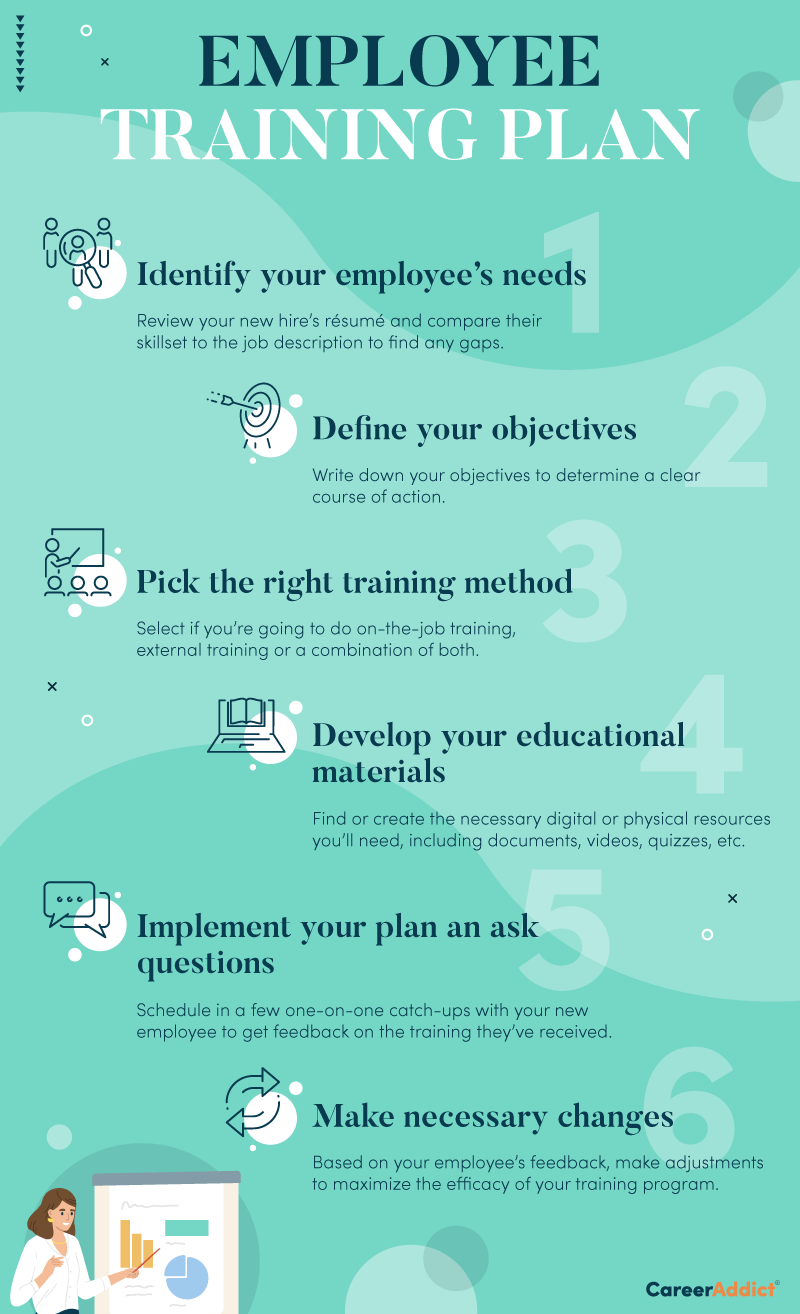It’s your first day at work. You’re three espressos in, wriggling around in a shirt that’s slightly tight around the chest, and waiting for your training to start. Only it never really does.
Instead, your manager appears and gestures vaguely at some documents. “Read these,” he says. Then he gestures at a colleague. “When you’re done, just look at what Kris is doing, and do the same.”
Without knowing anything about this guy, you can guess that his favorite type of employee is the one who “hits the ground running” — and does it alone.
While skimming over training can, in theory, save resources, what happens is that you end up with heaps of wasted potential and a bunch of frustrated employees who soon throw in the towel.
In this article, we’ll look at the steps you can take to implement an effective training program, which can improve employee engagement and productivity and reduce costly turnover. To make life a little easier, we’ve also included a new hire training checklist you can download and refer to when creating your plan.
Step 1: Consider your employee’s needs
While there are things that you need from your new employer, you need to take some time to consider what it is they’ll need to be ready to start work. You could throw all sorts of information and tools at your trainees, but if it’s not what they need, it’ll all be a shot in the dark.
To train new employees effectively, you must first gain some employee understanding. This means stepping in their shoes for a minute, and the best way to do this is to go over their résumé.
Have a close look at their educational background and previous work experience. Then, compare their skillset and knowledge against the job responsibilities and requirements to identify any gaps. Once you do this, you’ll know what points you’ll need to focus on during the training period.
Step 2: Define your objectives
Unless you have some clear aims written down, you won’t be able to come up with a course of action for your training plan. You also won’t be able to assess the efficacy of your onboarding process later on.
So, once you’ve considered your new team member’s existing knowledge, as well as their strengths and weaknesses, you need to write down a list of the things they must be trained in. Dividing these objectives into clusters and spreading them out over time can protect your employee from experiencing an information overload.
Keep in mind that by giving them a chance to apply what they learn before moving on to another topic will help them retain the knowledge better and progress faster.
When you write up your list of learning outcomes, you can also share it with your new employee at the beginning of the process so they, too, can know what to expect.
Step 3: Decide on the type of training plan
Group workshops, online learning, in-person seminars… Employee training programs come in many shapes!
Choosing between providing on-the-job training or utilizing external resources will depend on the needs of your employee and your desired outcomes. The first is excellent when training new hires, as they get to learn directly from experienced employees who can explain the ins and outs of how the company operates. The latter, on the other hand, is typically made use of when upskilling or reskilling existing employees to catch up with the latest industry practices or to take on new roles. A combination of the two approaches can prove useful when an employee must develop both theoretical and practical knowledge.
If your training plan involves job shadowing, consider which of your employees would be happy to be observed while carrying out their day-to-day tasks. Ask for their consent before including their name in your training plan, otherwise things might get awkward for everyone involved.
Step 4: Develop your training materials
Training materials can range from physical and digital documents to online tutorials, courses, and quizzes. Some of these resources can be found online for free or accessed at a fee, while others may need to be created from scratch by someone on your team. If the latter is required, give your employees a heads-up so they can come up with a thorough handover or how-to document in time.
As mentioned earlier, your employee onboarding needs to begin with employee understanding, so always keep in mind who your audience is and what their needs are when putting your educational resources together.
Step 5: Implement your plan and request feedback
Setting your training plan into motion is the only way to gauge whether or not it’s working as it should. So, once you’ve set employee expectations, given them their training materials, and assigned them to a mentor, it’s good to also schedule in one-on-one meetings to see how they’re progressing. Maybe they’re getting on just fine, or maybe the pace is too fast (or slow) for the amount of information they can comfortably absorb.
Asking the right questions and listening carefully to the answers is an excellent way to optimize your training plan.
Step 6: Make adjustments
Effective new hire training programs require tailoring to the employee’s existing knowledge and learning style. Some people are visual or auditory learners, while others are able to recall information with more ease once they’ve written it down first.
By inquiring into your new employee’s learning preferences and asking how they’re finding the training program so far, you’ll gain precious insights into what resources they could use more or less of.
Frequent check-ins with your new trainee and evaluation of your methods make up the final step in perfecting your training plan.
Checklist
An effective employee training plan can improve engagement and productivity. It can also reduce turnover, minimizing company expenditure.
To create a comprehensive training program for new and existing employees, save this checklist:

Final thoughts
An effective training process can make recently onboarded and trained employees feel comfortable in their new environment. And, at a time when employers around the world are struggling to retain talent, making a positive first impression is of vital importance. The good news is that companies are catching on: more than 9 in 10 have made improving employee experience a top priority, according to a global 2021 survey by Willis Towers Watson.
Indeed, prioritizing employee well-being is one of the most foolproof ways businesses can safeguard their interests against the Great Resignation, which is still in full swing.
Listening to the concerns of employees, acting on feedback, and providing support are great ways of establishing a healthy company culture — and they’re all elements that should be reflected in your training plan, too. If they’re missing, you run the risk of attracting talented workers with your job advertisement and then chasing them out the door with your poor leadership decisions.
What things did you do to create a robust training plan for new hires? Let us know in the comments and share this with your colleagues!
